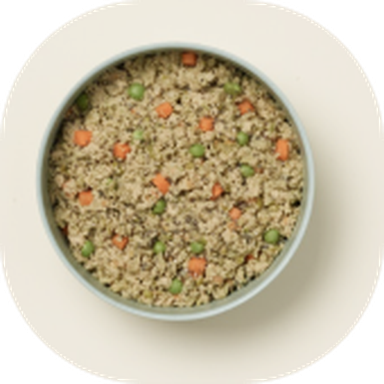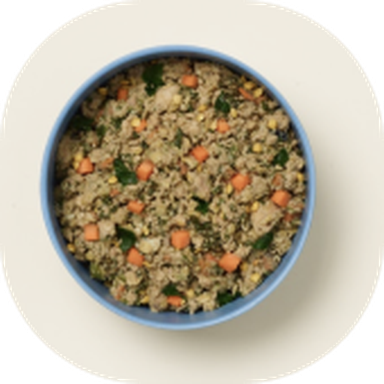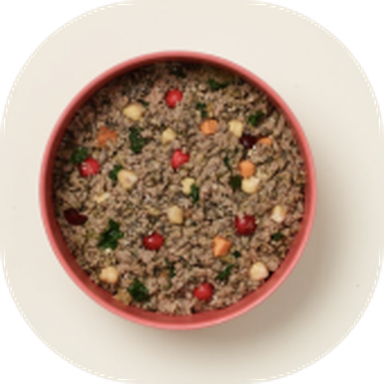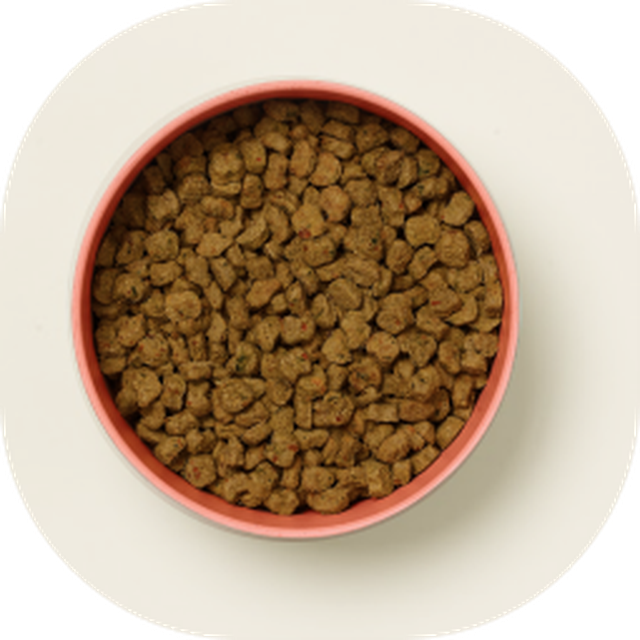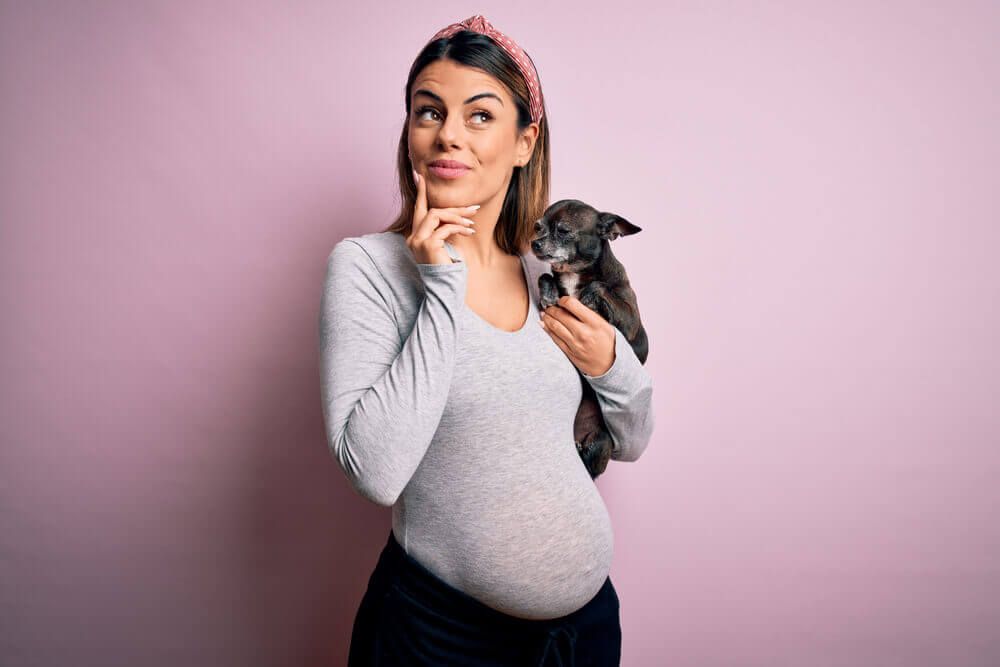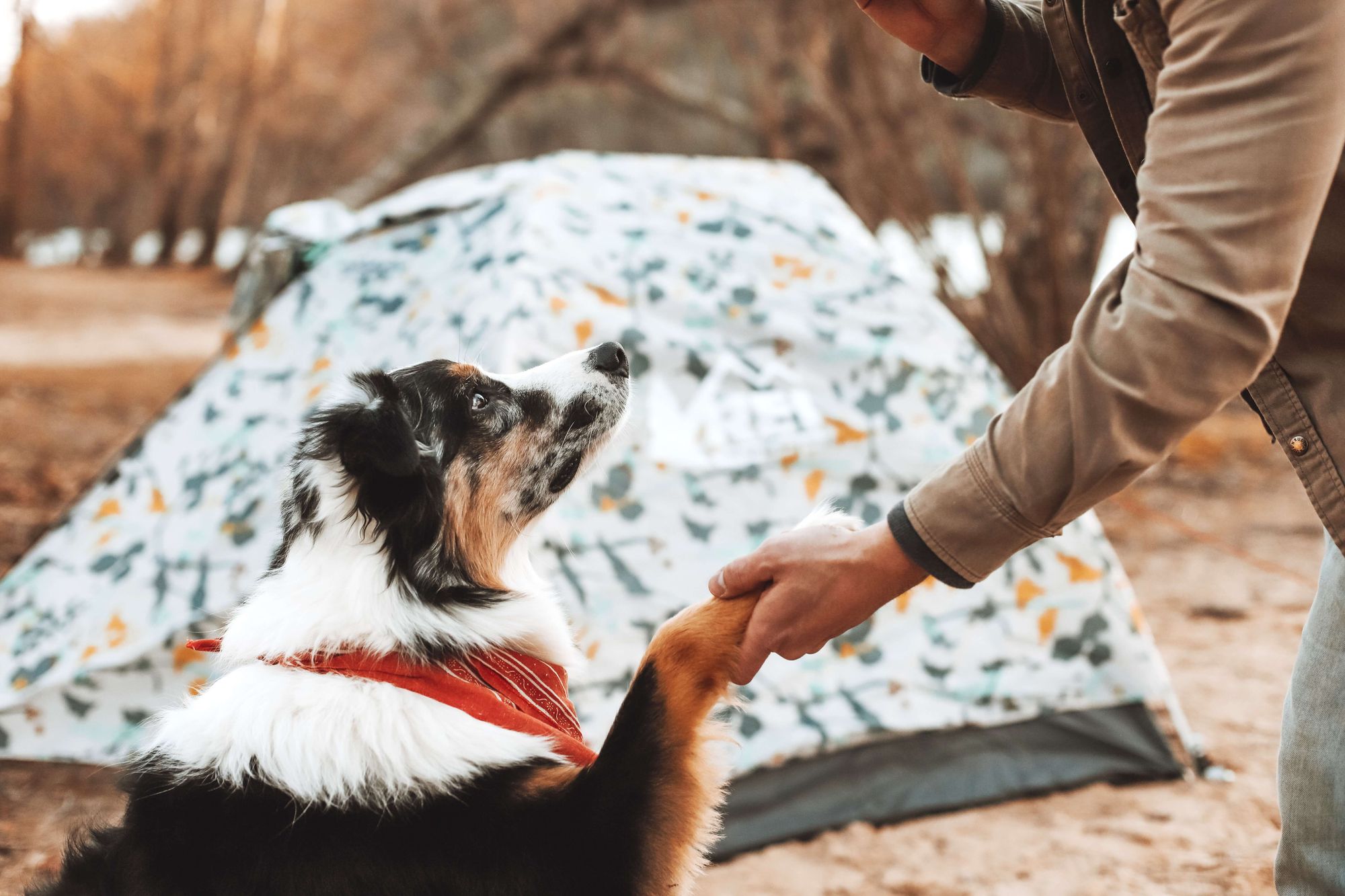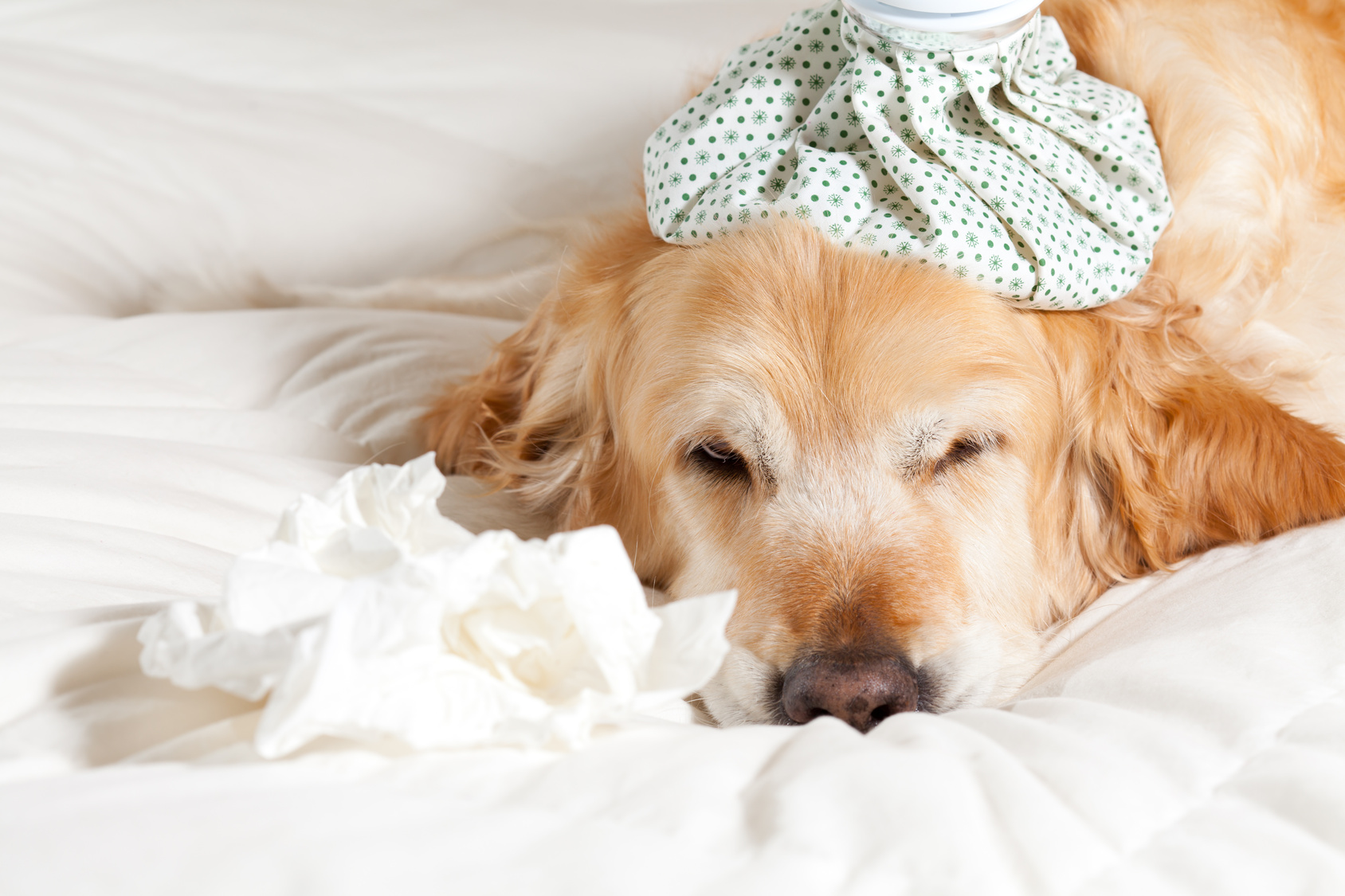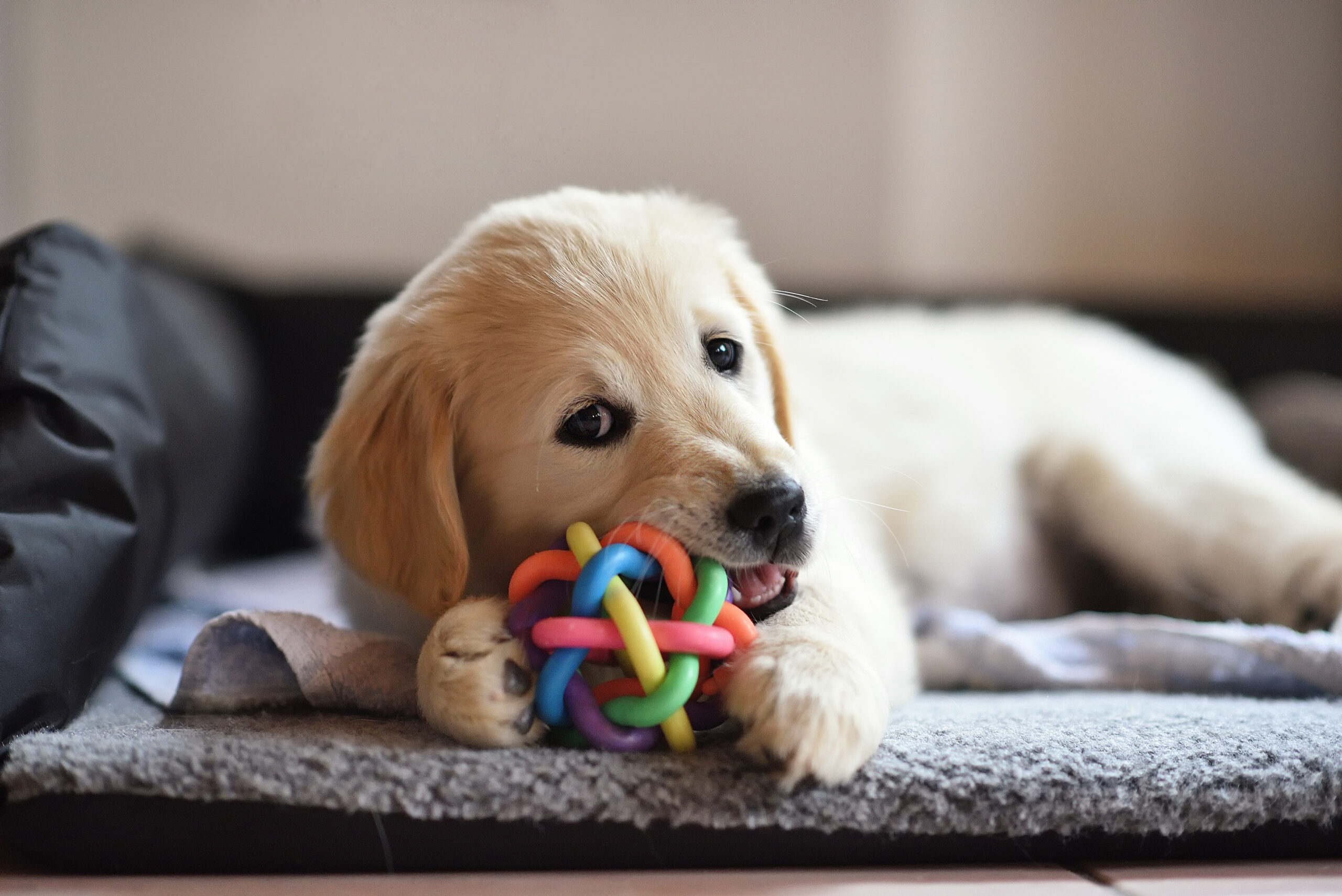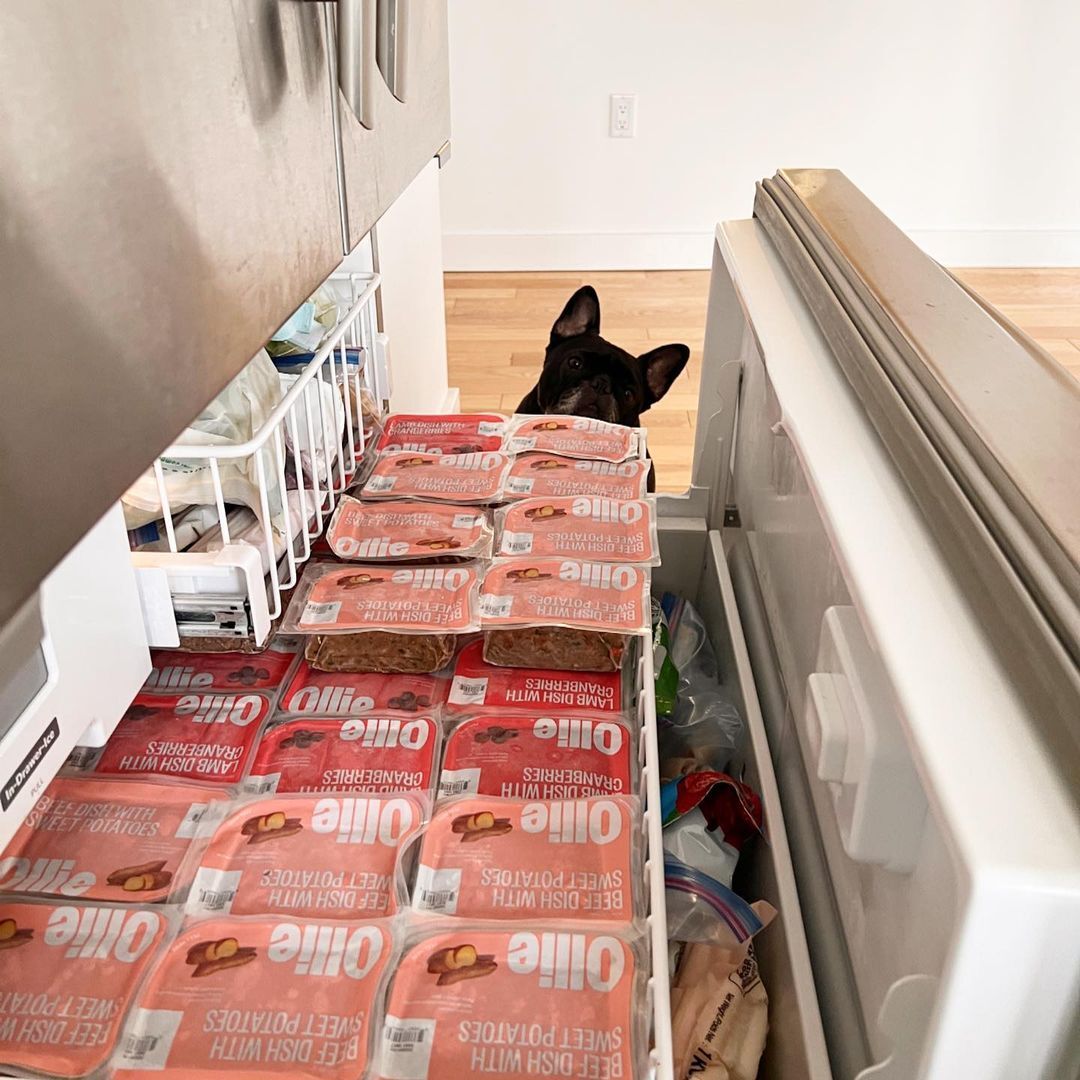Hey Ollie blog readers! We’re offering you an exclusive 60% OFF your starter box! Try now!
Considering bringing home a new puppy? As exciting as it is, it can also be a little overwhelming. If you’ve never owned a puppy before you might be tempted to go a little crazy and buy one of everything. Don’t worry, that’s not completely necessary. We put together thig guide so you know exactly what to buy, and what to do to set yourself up to be the best dog owner you can be!
First, stock up on the right supplies.
Here’s the deal: puppies require stuff and getting the right stuff ahead of time will save you time, money, and frantic group texts asking for favors at odd hours. The pre-puppy essentials are:
1. Collar
Comfortable and appropriately sized for your puppy. If you are rescuing, the shelter or rescue might give you a collar to bring home your puppy in. If you are purchasing a pup, reach out to your breeder to ask about sizing so you show up with a collar that is safe, comfortable and fits your new best friend. There are several styles of collars that are made for puppies. Our advice is to start with a simple, flat collar to help your puppy get used to wearing it. You will want to attach ID tags to the collar so your puppy gets used to wearing them. If the jingling is bothering you (or them) you can get a collar with the information printed on it, or consider a silencer.
2.Leash
To go with your new collar, you also want to get a leash. Puppies sometimes chew on their leashes when they are learning to walk (and teething) so consider starting with a simple, flat leash that isn’t too expensive. Chances are, your puppy will chew it and/or outgrow it quickly so save the really special expensive leash purchase for when your pup is a little older.
3. Food and water bowls
Choose something stainless steel and easy to clean (dirty bowls are breeding grounds for bacteria). If you have a larger breed dog, you might wish to consider a raised feeder at some point.
4. Bedding
Resist the urge to start the puppy out in your own bed. (key here is to “start”.. see here for more co-sleeping “etiquette”). You can also use your dog’s bed or place as a training tool. Many pet owners like to teach the command, “go to your bed” or “go to your place”. This gives your puppy a home base to relax on when guests are arriving or when you are eating (so they aren’t begging).
5. Crate
Puppies are known to explore (with their mouths). When you can’t directly supervise your puppy or you run out for a few errands or go to work, you want your puppy to be safely in their crate. Purchase a crate that is the right size for your puppy when they are fully grown. You can purchase a partition to close off the crate to an appropriate size and adjust as your puppy grows. Many owners have their young puppies sleep in their crates to minimize the risk of middle of the night accidents. At night, consider keeping the crate in or near your bedroom so you hear your puppy if they get up. Some puppies need a middle of the night or very early morning walk! You can purchase a soft mat or liner for your crate to make it cozy for your puppy. Avoid leaving them in the crate with toys that they can destroy or choke on.
6. Chew toy
Puppies bite and teethe. While tiny puppy nibbles might feel good (no judgment if you love puppy bites) they get less enjoyable as your pup gets bigger and starts getting adult teeth. In order to teach your pup that hands, noses, and hair are off-limits, make sure you have some appropriate chew toys for your puppy. Try these Nylabone pacifiers or teething keys. They’re not too hard or too soft for your puppy! One note on safety, never leave your puppy unsupervised with these toys. They can eventually bite off large chunks and swallow them. If the toys are too chewed down, replace them.
7. Training treats
Treats are how you will communicate with your puppy at first. As they go to the bathroom outside, learn to walk politely on a leash and master basic commands like sit and down, you will want to reinforce their good behavior with training treats. Choose something delicious and small. Your pup will go through a lot of these treats in the first few months. Don’t worry too much about the extra calories. Most training treats are only 2-4 calories each. Your growing puppy will be just fine. If you’re concerned consider feeding a little less at mealtimes and discuss overall nutrition with your vet at your puppy appointments.
8. Dog shampoo
You’ll want to get your puppy used to taking a bath when they are young and small. If you have a smaller breed dog, bathe them in the sink. Larger pups can go in your bathtub or shower. Even if you plan to have your pup professionally groomed, you should keep some shampoo on hand in case of emergency (like someone rolling in the dirt before a holiday). Choose a natural shampoo designed for puppies sensitive skin to start.
9. Dog brush
Keeping your pup well-groomed isn’t just about aesthetics. Yes, watching your dog confidently swish his floof is oh so satisfying but there is more to it than that! You want to keep your puppy from getting painful mats in their coat. These mats, if they get bad enough will need to be shaved off. Regular brushing prevents this from happening and it starts early. If you don’t know what kind of brush to get, consult a professional groomer. They can help you get your pup used to being brushed and handled for other tasks like ear cleaning and nail trimming!
10. Food
We saved this one for last because it can be a bit overwhelming. You have so many choices when it comes to your puppies diet, it can make your head spin. Wet food, dry food or fresh food- which is best? What brand should you choose? Is the food safe?
We might be biased, but we definitely recommend our Ollie fresh cooked dog food. The food comes in four recipes to satisfy even the pickiest of puppies. We use human-grade meats like chicken, beef, lamb and turkey that are mixed with fruit and vegetables to help your puppy grow big and strong. These ingredients are gently cooked, packed, and delivered to your frozen into manageable portions to make mealtimes easy. We can tailor a diet for your puppy as he or she grows.
These essentials will keep you calm and prepared for puppy’s needs,and will help you create a consistent routine. The more consistent the environment, the more effective your training, and the more smug you can be to your dog owner friends! Show them just how quickly you’re adjusting to being a new puppy owner and how fast your puppy is learning the ropes.
Teach your puppy where to go to the bathroom ASAP
Speaking of consistency, you should plot out specific locations where your puppy will eat, sleep, and (ahem) go potty. You can also choose a word to use so that eventually your pup will know when to go. (Some people like go pee pees or do your business) You want your pup to immediately associate these locations and words with the appropriate behavior right from the start. And when they perform that appropriate behavior, give them one of those training treats from your pocket along with some blubbery affirmative baby talk, followed by sixteen repetitions of “Who’s a good dog?”
To give your potty training a boost, take your new puppy outside every 30 minutes or so when they’re awake. Also offer a potty break after vigorous play and when your pup wakes up from a nap. In the morning as soon as everyone’s eyes open, get outside as fast as you can! While these tips won’t mean you’ll never be cleaning up an accident, they make them far fewer!
Puppy Proof (More than you think you need to)
Here’s a genius idea that requires you to look foolish for a few minutes: crawl around your home and think like a curious puppy who wants to discover his new world by pawing, chewing and wriggling his way into dark spaces. This is the best way to identify potential hazards and not a bad way to end up on a viral YouTube video if your friends happen to stop by while you’re at it. Puppies are adventurous and love to stick everything in their mouths. This includes TV wires, kids toys, underwear, shoes or anything else you leave lying around. If your puppy can get to it, assume it will be chewed on or played with. Consider this carefully before you forget to put away your favorite handbag or yoga mat.
Create and stick to a schedule
It’s true that one of your best characteristics is your laid-back temperament, but you and your puppy will both benefit from a regular schedule for eating, sleeping, and walks. A puppy who needs to pee is going to pee whenever, wherever if his body isn’t used to getting a regular break outside accompanied by one of those tasty training treats. After all, wouldn’t you? In fact, you did until a bigger human gave you regular opportunities, followed by an m&m. When creating your schedule include time for training and socialization (more on that below). Keep training sessions at home short, positive and focused on one (or two) skills. For example, try doing a few sits or downs and going back to some playtime. Later work on leash manners or try harder commands like ‘come’ or ‘stay’. Always end training on a positive note and if your pup isn’t interested in training that is okay. Move on to something else and come back to it when your pup is ready to focus. If your pup is tired or has to go to the bathroom they might not be as focused on the task at hand. By creating a schedule and routine, you are setting your pup up for success. That said, if your pup misses one training session or needs a longer nap occasionally that’s okay. If you’re having major problems sticking to the schedule consult a professional trainer or your vet to make sure your schedule is realistic and nothing else is going on with your pup!
Socialize your puppy!
Sure, you want to soak up all that delicious puppy breath by yourself, but socializing your puppy from the beginning will pay off for a lifetime. This means exposing your pup to as many new people, animals and places as is comfortable. You’re introducing your dog to a big, safe world with lots of interesting people, places and things. Without this socialization, your dog is likely to become suspicious, anxious, territorial, or aggressive. Of course, you can overstimulate your pup, so watch for his cues that he’s had enough and offer some quiet time afterward.
Even if you plan to do most of your training at home, consider at least attending a few group puppy kindergarten classes. In addition to getting the experience of a skilled trainer, your puppy will have the opportunity to socialize with other age-appropriate puppies in a safe space. Most of these classes are only open to pups about 6 months or younger. Not only will your pup get to socialize, but its a great way for you to meet other new puppy owners. You can swap stories about the sweetest things they do and also all the damage they cause. (No matter how much you puppy proof, your pup will get into something.)
Owning a puppy is a LOT of work, but they bring you a LOT of love and joy. With these tips, you will be well prepared to become the best first time puppy parent you can be. Remember to have fun! If you make a mistake, your puppy will forgive you, and probably lick your face until you’ve forgotten all about it!
The Ollie blog is devoted to helping pet parents lead healthier lives with their pups. If you want to learn more about our fresh, human-grade food, check out MyOllie.com.
Tagged As:

The nutrition your dog needs,
the food they want.

Enjoying our articles? Subscribe our Newsletters and get new articles directly to your inbox
You might also like
20 June 2024
9 MINS READ
Owner Guide: New Puppy Checklist
Welcoming a new puppy into your life and home is an exciting time filled with “firsts,” but this magical time also requires careful planning to ensure a positive transition for your pup. Prepa…
by Ollie Pets
22 June 2023
6 MINS READ
Why Are Dogs Scared of Fireworks? How to Help Your Dog Cope With Fireworks Anxiety
Fireworks may be summer’s soundtrack, but these loud and sudden noises signal terror for many noise-sensitive pups. Learn why dogs become so rattled by fireworks and how you can help your pup fee…
4 March 2023
2 MINS READ
Tips for Organizing Your Ollie
Keep your pup’s mealtime routine neat and tidy with these organizing tips and tricks from the Ollie pack.
by Ollie Pets

